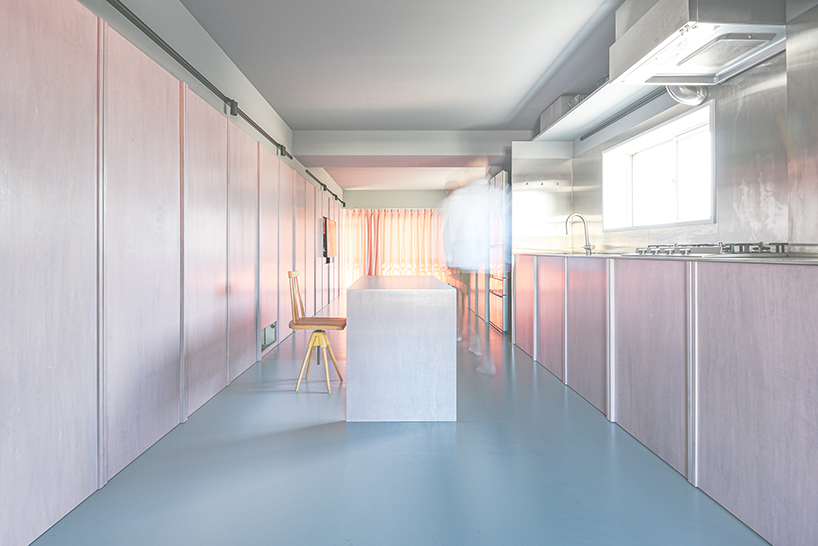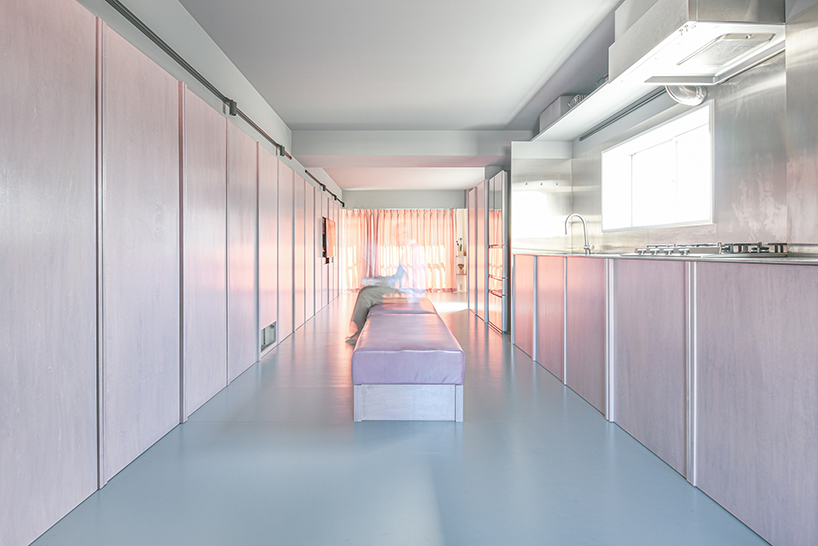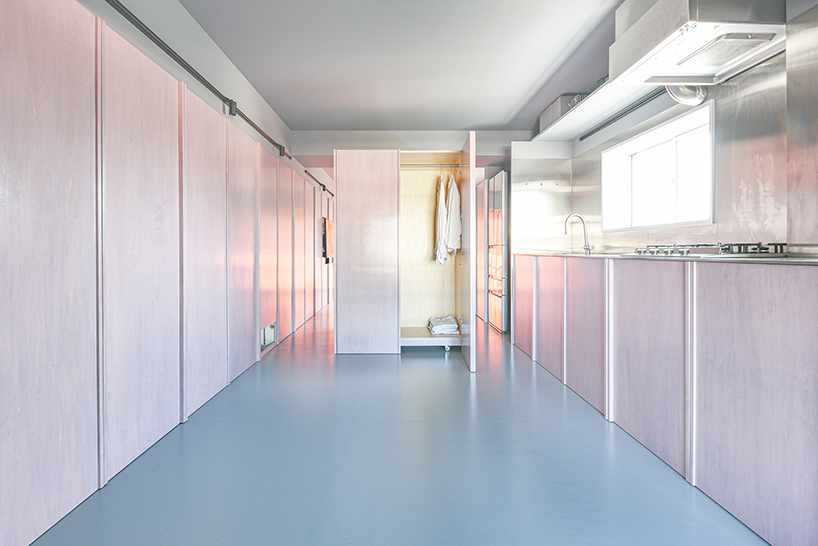404 minimum apartment in tokyo uses movie set technique for optical expansion
404 tokyo apartment makes full use of its minimum area
‘404’ is a renovation solution by Suguru Fukuda for space utilization in a minimum apartment in Tokyo. The project aimed to create a sense of space greater than the actual area. With balconies on both the north and south sides, the layout was arranged in favor of maintaining views through the openings and increasing the natural light in the interior. The main plan of bedrooms and bathrooms is built around a large hall functioning as a common area.
Being the most important unit of the layout, the hall covers the largest part in a long and narrow set-up. Cherry-blossom-colored wall panels embed the surfaces of the tunnel-like room.

all images by Yuta Itagaki / Kiengi
panels in cherry blossom color hide rooms and fitted furniture
The cherry-blossom cladding besides dividing the rooms from the hall, also, works as fixtures, decorations, and furniture that can be stored or displayed in different positions. The identical components hide features that extend beyond the wall surface. The idea of an extension behind the main area of the plan feeds the perception of a bigger space. In the same way, applying 18.5 cm doors and panels, below the average of a typical door, expands the sense of height in the rest of the room. The designer followed a 16:9 ratio, often used in movie settings, to emphasize vertical elongation. This spatial experiment creates a somewhat fictional effect throughout. The minimum ‘404’ flat appears more spacious than its real capacity.

furniture can be stored or displayed in different positions

fitted fixtures can move independently in the common area
